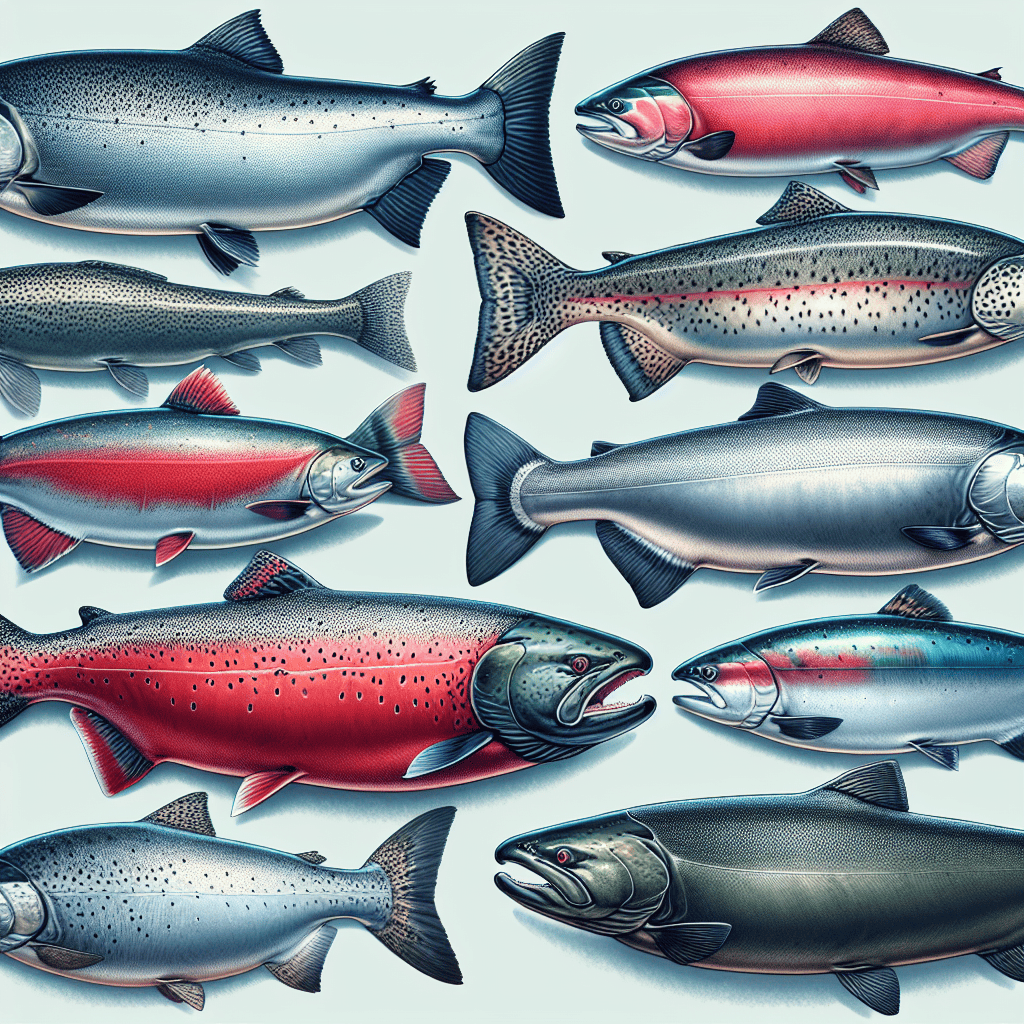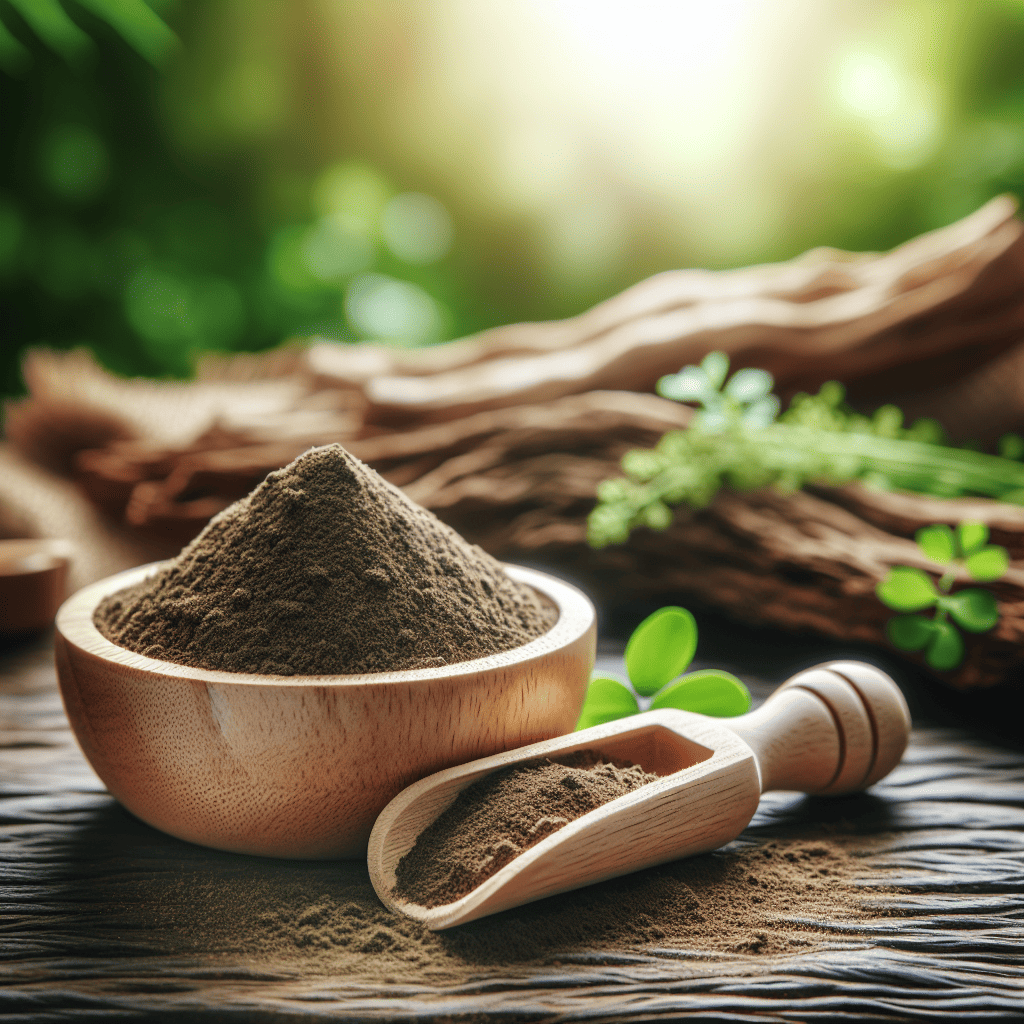Introduction: Salmon is not only a delicious seafood choice but also packed with health benefits. In this guide, we will delve into the different types of salmon, exploring their unique characteristics, flavors, and habitats so you can make informed choices when selecting your favorite fish.
Table of Contents
Types of Salmon
Salmon species vary in taste, size, and habitat. Let’s explore the key characteristics of the following types:
- Chinook Salmon:
Chinook salmon, also known as king salmon, is a popular type of fish prized for its exceptional nutritional profile. One of the standout features of Chinook salmon is its high omega-3 fatty acid content, which is known for its numerous health benefits, including reducing inflammation, improving heart health, and supporting brain function. This makes Chinook salmon a valuable addition to a balanced diet, especially for those looking to increase their intake of essential fatty acids.
In addition to its impressive omega-3 fatty acid levels, Chinook salmon is also notable for its large size compared to other salmon species. With an average weight of around 45 kilograms, Chinook salmon is one of the largest species of Pacific salmon. This generous size contributes to its popularity among seafood lovers, as it provides a hearty and satisfying meal option. Furthermore, Chinook salmon has a length ranging from 56 to 81 cm, adding to its visual appeal and making it a striking choice for culinary presentations.
Another distinguishing feature of Chinook salmon is its rich and indulgent flavor profile. The flesh of Chinook salmon is known for its buttery texture and succulent taste, making it a favorite among chefs and home cooks alike. Whether grilled, baked, or seared, Chinook salmon offers a delicious dining experience that is both versatile and flavorful. Its distinct taste pairs well with a variety of seasonings and cooking methods, allowing for endless culinary creativity in the kitchen. Overall, Chinook salmon’s combination of high omega-3 fatty acids, large size, and rich flavor makes it a sought-after seafood option for discerning palates.
- Red Salmon:
Red salmon, also known as sockeye salmon, is a prized species primarily found in Alaskan waters. This variety of salmon is renowned for its striking color transformation during its lifecycle. When these fish are prepared for consumption, their flesh transitions from a vibrant orange-red hue to a deep red, making them visually stunning. This unique feature, combined with its firm texture and rich flavor, contributes to red salmon’s popularity among seafood enthusiasts.
Weighing an average of 2.7 kilograms, red salmon is a medium-sized species compared to other types of salmon. Despite their size, these fish are highly valued for their flavorful meat, making them a sought-after catch for commercial and recreational fishing purposes. In addition to its culinary appeal, red salmon is renowned for its nutritional benefits. This fish is an excellent source of high-quality protein, omega-3 fatty acids, and essential vitamins and minerals, making it a healthy dietary choice.
Due to its delectable taste and nutritional value, red salmon is a versatile ingredient that can be prepared in various ways, such as grilling, baking, or smoking. In Alaskan cuisine, red salmon is often featured in traditional dishes like salmon chowder, salmon burgers, or simply grilled with a sprinkle of lemon and herbs. The sustainability of red salmon populations is also a critical consideration, as efforts are made to regulate fishing practices and conserve their habitats to ensure the continued abundance of this prized species in the waters of Alaska.
- Coho Salmon:
Coho salmon, also known as silver salmon, is a highly sought-after fish in the world of seafood. It is prized for its taste, which is often compared to the highly regarded king salmon. Coho salmon offers a delicate flavor profile with a moderate fat content, making it a versatile ingredient for a variety of cooking methods and dishes. Its weight typically ranges from 2 to 5.5 kilograms, and it has an average size of 56 to 66 centimeters, making it a convenient option for both individual servings and larger meals.
One of the key characteristics of coho salmon is its vibrant orange-red flesh, which adds a visual appeal to culinary presentations. This species of salmon is known for its firm texture and relatively lower oil content compared to other types of salmon, making it suitable for grilling, baking, broiling, or even raw preparations like sashimi. Its versatility in cooking methods allows chefs and home cooks to experiment with different recipes and flavor profiles, from simple grilled fillets with lemon and herbs to more elaborate dishes with sauces and marinades.
In addition to its culinary appeal, coho salmon is also valued for its nutritional benefits. Like other types of salmon, coho salmon is a rich source of protein, omega-3 fatty acids, and essential vitamins and minerals. Regular consumption of coho salmon can contribute to heart health, brain function, and overall well-being. Whether enjoyed in a restaurant dish or prepared at home, coho salmon is a flavorful and nutritious seafood option that satisfies the palate and provides numerous health benefits.
- Humpback Salmon:
Humpback salmon, also commonly referred to as pink salmon, belongs to the species Oncorhynchus gorbuscha and is one of the smaller species of Pacific salmon. These fish are named for the distinctive hump that males develop on their backs when they spawn, contributing to their recognizable appearance. Humpback salmon are known for their vibrant pink-colored flesh, which is due to their diet rich in krill and shrimp. The color of their meat intensifies when cooked, adding a visually appealing element to dishes.
In addition to their striking appearance, humpback salmon are favored for their delicate texture and mild flavor. Their flesh is softer compared to other salmon varieties, making them well-suited for various cooking methods such as grilling, baking, or pan-searing. Due to their lighter taste profile, humpback salmon pair well with a variety of seasonings and ingredients, allowing for versatile culinary creations. Whether marinated, smoked, or simply seasoned with salt and pepper, humpback salmon’s natural flavors shine through in every dish.
Despite being smaller in size compared to other salmon species, humpback salmon are highly valued by commercial and recreational fishermen alike. Their abundance in the waters of the North Pacific, particularly in regions like Alaska and the Pacific Northwest, makes them a popular choice for seafood enthusiasts. Whether enjoyed fresh, frozen, or canned, humpback salmon offer a flavorful and nutritious dining experience. With their tender flesh, light taste, and beautiful pink hue, humpback salmon continue to be a sought-after seafood option for consumers looking to elevate their culinary creations.
- Chum Salmon:
Chum salmon, also known as dog salmon, is a type of salmon that stands out for its unique characteristics. It is recognized for its mild flavor, which sets it apart from other types of salmon. This fish has a drier texture compared to some of its counterparts, making it a favorite among seafood lovers who enjoy a firmer bite. The reddish-pink color of chum salmon not only adds to its visual appeal but also indicates its high quality and freshness.
Weighing between 3 to 5 kilograms on average, chum salmon falls into the moderate size range when it comes to salmon species. This makes it a versatile option for cooking, as it can be prepared in various ways to suit different culinary preferences. Whether grilled, broiled, baked, or smoked, chum salmon holds up well during the cooking process, retaining its flavor and texture. Its distinct taste and appearance make it a popular choice for seafood dishes in restaurants and households around the world.
Due to its unique qualities, chum salmon is often sought after by chefs and home cooks looking to experiment with different flavors and textures. Its mild taste makes it a versatile ingredient that can be paired with a wide range of seasonings and sauces, allowing for creative culinary creations. The moderate size and weight of chum salmon also make it convenient to work with in the kitchen. Whether you prefer simple preparations that let the natural flavor of the fish shine through or more complex recipes that incorporate bold ingredients, chum salmon offers endless possibilities for delicious meals.
- Atlantic Salmon:
Atlantic salmon, also known as Salar salmon, is a species of fish native to rivers draining into the North Atlantic Ocean. It is widely sought after for its delicious taste, making it a popular choice for culinary dishes worldwide. This versatile fish is known for its mild flavor, making it well-suited for various cooking methods such as grilling, baking, or searing.
In addition to its culinary appeal, Atlantic salmon is also highly regarded for its nutritional benefits. It is an excellent source of high-quality protein, omega-3 fatty acids, and various essential nutrients such as vitamin D and selenium. These nutrients are known for their role in supporting heart health, brain function, and overall well-being. Incorporating Atlantic salmon into a balanced diet can provide a range of health benefits, making it a valuable addition to a healthy lifestyle.
When it comes to affordability, Atlantic salmon is often considered a cost-effective option compared to other types of salmon. Its availability in various forms, including fresh, frozen, or smoked, makes it a versatile choice for consumers looking for quality seafood at a reasonable price. Whether enjoyed in a simple grilled fillet, added to salads, or used in sushi and sashimi dishes, Atlantic salmon offers a delicious and nutritious option for seafood lovers of all tastes.




